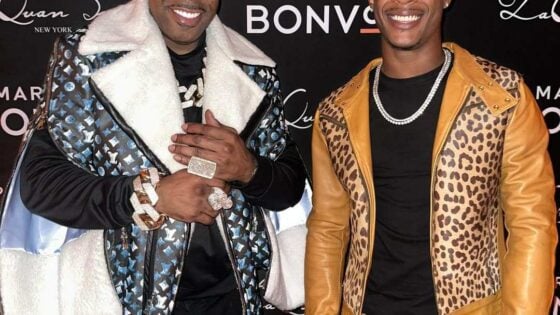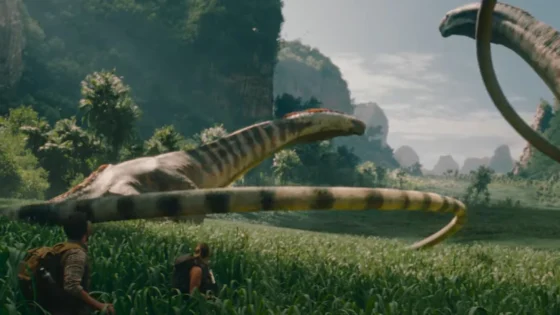Willem Dafoe Stars in Abel Ferrara’s moving character study
“That film made me a Buddhist. I got so Catholic I became a Buddhist.” – Abel Ferrara, in a conversation about his 2005 film ‘Mary’
While Pedro Almodóvar’s neutered self-portrait filled the stadium-sized Grand Theatre Lumière in a coveted competition slot, a far more emotionally charged, conceptually ambitious, and intellectually stimulating autobiographical film was regulated to the tiny Buñuel theatre to a sparse crowd as part of the less-prestigious Séances spéciales selection. It is in Ferrara’s feature, however, that we find the true pain and the glory that eluded Almodóvar’s vision. Tommaso is an epic movie disguised as a minor note — a grand reflection on Ferrara’s conflicted relationship with drugs, religion, and the opposite sex, on-screen and off. In a sense, Tommaso feels like an update on Ferrara’s great confessional, Dangerous Game. Both films feature an explicit Ferrara stand-in wrestling with faith, fidelity, and the complexities of the filmmaking process. Both also feature Ferrara’s family members in main roles. Both are split evenly between domestic drama and sequences detailing the protagonist’s working process. And both fearlessly lay bare the flaws and contradictions of their creator before attempting to carve an uneasy path to redemption.
Ferrara is in a far different position in 2019 than he was in 1993, however. Dangerous Game is the work of an artist at the height of his commercial success, unexpectedly embraced by an industry in which he had always felt like an outsider, suddenly forced to shoulder the burden of large budgets, big celebrities, and studio expectations. The Ferrara of Dangerous Game is an erratic mess — an adulterer, a coke addict, and an exploitative emotional manipulator.
In 2019, Ferrara has finally achieved the critical respect that had eluded him for so long, but he’s lost the commercial clout. Living in Rome and more or less an outcast from the American film history, Ferrara recently failed to secure the funding for his planned feature, Siberia. His previous film, Pasolini, caused a stir on the festival circuit, but sat on the shelf for four years before receiving a stateside release, while Welcome to New York was publicly banned from the Cannes Film Festival due to its subversive content, and was horribly butchered for U.S. screenings to appease the MPAA. Ferrara’s ambivalence towards this downward trajectory in his popularity is explored explicitly in Tomasso.
Whereas Game takes place mostly on the soundstage of a big-budget feature, Tomasso details Ferrara’s struggle to raise the funds for Siberia, as well as his gig as a drama teacher to raise extra money. Pieces from the script and concept drawings are interspersed throughout the film, as if Ferrara is desperate to get whatever he can from the project on screen in whatever form he can. Meanwhile, snippets from Tomasso’s teachings provide an insight into Ferrara’s philosophy of performance. During a late-stage fantasy sequence, Tomasso imagines himself captured suddenly by the Italian authorities and forced to testify for the crime of spreading subversive political speeches in the piazza to the public; there are clear echoes of Pasolini’s final interview, so lovingly recreated in Ferrara’s previous film.
But if Ferrara’s career (if not the actual quality of his films) has hit a rough patch, his personal life seems to be in far better shape. Now six years sober, Ferrara has settled down into family life with long-term partner, and embraced the serenity of Buddhism. This former hedonist — who, if legend is to be trusted, went through a period where he would smoke two crack rocks before heading to set each morning — and this newfound inner peace is reflected in his formal style. The rough, low-fi visual textures of Dangerous Game have been replaced by the clarity of HD digital video, while freewheeling excesses are replaced by a tight formal precision, the grizzly brown/dark colour scheme is replaced by a sun-lit palate, and the ferocity of the images is replaced by a sense of placid understated lyricism.
There is a delicacy to the formal construction that stands in stark contrast to the visual and aural cacophony of the earlier film, and the scenes of domestic bliss which pepper the first half of Tomasso are infused with a sense of simple joy unlike anything in Game, which could only realize pleasure hand-in-hand through self-destructive, hedonistic pain. The oppressive weight of Catholic guilt which clouded the earlier film has been lifted, replaced with a newfound empathy, calm, generosity of spirit, and compassion. The mood of Tomasso is one of calm, positive Taoist spirituality — albeit one infused by element of Catholic symbolism. At a low point, Tomasso imagines himself chained to a streetlamp above the city like Jesus on the cross, gazing directly into the audience. And whereas Game, while not exactly a model of classical screenwriting craft, was driven by a linear path to simultaneous redemption and self-destruction, Tomasso is loose and free-wheeling, hopping from vignette to vignette.
And yet, this sense of stability is precarious, and where Game is primarily focused on a debased Ferrara struggling to transcend the muck and find the light, Tomasso is about a man who is consumed by the fear that he may sink back into the darkness. He imagines visions of his wife being unfaithful and manufactures reasons to be angry with her in order to pick unnecessary fights. The controlling streak exhibited by Ferrara in Game manifests here in more minor, mundane ways, such as a dispute about whether their daughter takes the subway or a cab — an argument which Tomasso magnifies to an absurd degree, especially during a piercing confrontation when he discovers that she has made lunch without fetching him first. These anxieties are largely motivated by the fear of abandonment, reaching their peak during an outburst when he emerges from a coffee shop a few beats after his wife and child, only to find that they have walked ahead of him and are missing from view.
The huge age gap between Tomasso and Nikki is central to these conflicts, but they are not caused by her attitude so much as his own self-doubts eating away at him; he attempts to take on a paternal tone, which she rejects. The self-sabotage of Dangerous Game remains then, even if the wallowing in masochistic despair has been replaced by an older and more mature man’s self-doubt. Tomasso is low-key — happy with his lot and terrified that it will all fall away. The conflicts within the film are primarily internalized, with the product of Tomasso’s own insecurities projected outwards, rather than being externally foisted upon him.
The emotional linchpin of the feature is an AA group that Tomasso frequents in order to confess stories of his progress, his hopes, and his anxieties. Ferrara, whose compassionate nature is growing as well as his documentary tendencies, devotes much screen time to former addicts, relating personal stories seemingly pulled from fact; the many sequences of Tomasso performing quotidian daily activities, such as buying food, going for coffee, and getting ice cream, are treated with the same level of graceful intimacy — of genuine delight in simple sensual pleasures — creating the impression that Ferrara wanted to capture the moments he loves in film form.
Within this AA space, Ferrara finds an anchor between the graceful spirituality of the present and the darkness of the past. “Addicts don’t form relationships, they take hostages,” a fellow group member quips. Tomasso uses the observation as a springboard to candidly discuss his inability to form intimate relationships, his tendency to abandon those close to him, his regret about his estrangement with his daughter, and his fear that he will be doomed to forever repeat his mistakes. It’s a gut-wrenching monologue, with Ferrara discussing his most intimate failings and anxieties through the paramour of Dafoe, his most trusted collaborator in his late period.
What separates an authentic work of self-inquiry like Tomasso from something more well-polished like Pain and Glory is that this is a work in which Ferrara is spontaneously and painfully wrestling with his own behaviour and emotions, rather than subsuming them to the demands of a well-oiled, scripted blueprint.
The 72nd Cannes Film Festival runs May 14, 2019 – May 25, 2019. Visit the festival’s official website for more info.

































